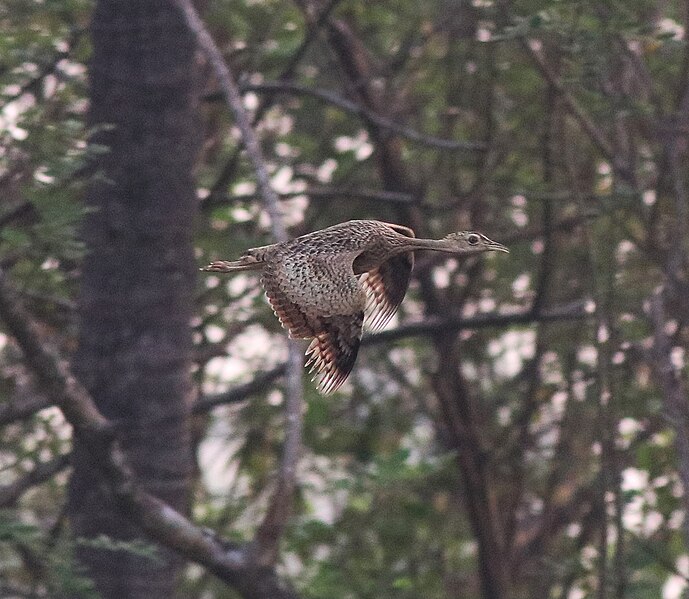Mountain ranges create isolated habitats where unique herbivores have evolved to survive in some of the world’s most challenging environments. These animals have adapted to steep, rugged terrains, extreme weather, and limited food sources, making them remarkable examples of resilience. From the high-altitude slopes of the Himalayas to the rocky peaks of the Andes, these herbivores play a vital role in maintaining their ecosystems. Each species has developed specialized behaviors and physical traits that allow them to thrive in isolation. As we explore these fascinating creatures, their importance to the biodiversity of their regions becomes even more apparent.
Tibetan Antelope (Pantholops hodgsonii)
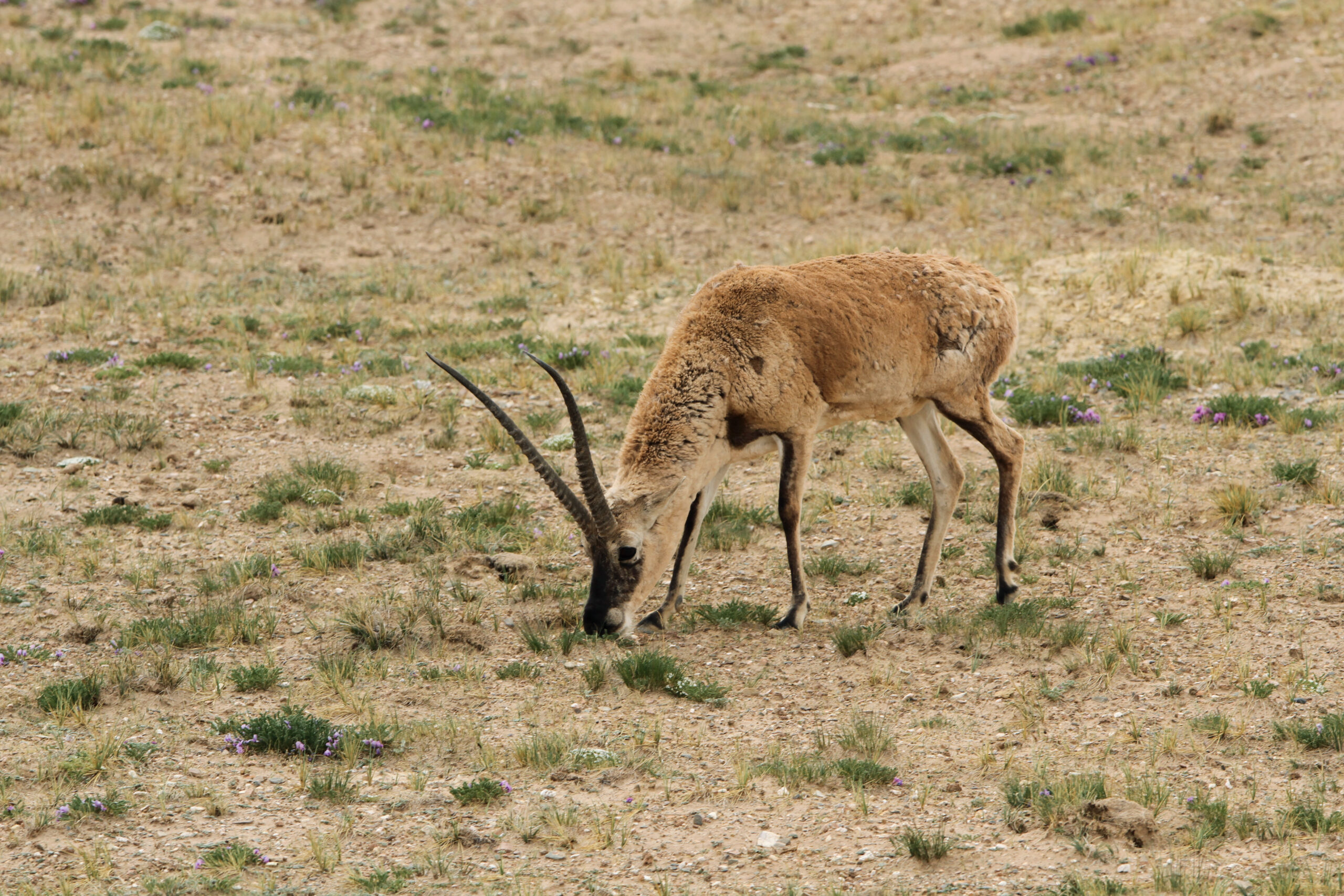
High up in the Tibetan Plateau, the Tibetan Antelope thrives in one of the harshest environments on Earth. Its thick, woolly coat provides insulation against freezing temperatures. These graceful creatures are known for their extraordinary migration patterns, covering hundreds of miles in search of food. Living in elevations over 4,000 meters, they survive on sparse grasses and shrubs. Unfortunately, they are heavily targeted by poachers for their prized undercoat, known as shahtoosh. Conservation efforts are underway to protect this vulnerable species from further decline.
Markhor (Capra falconeri)
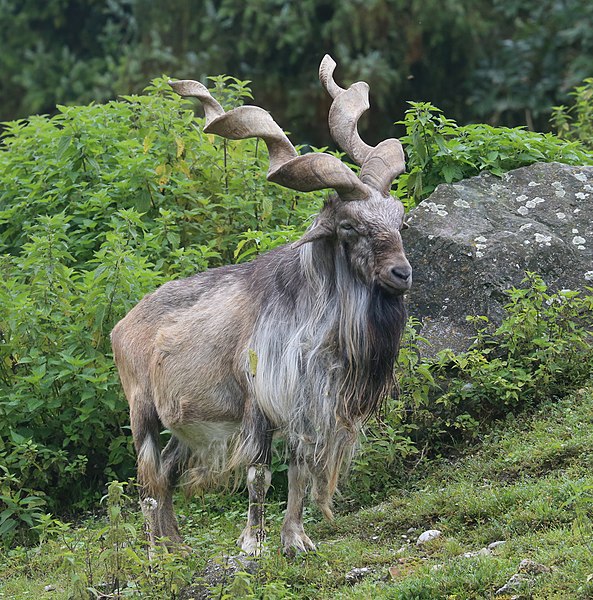
Markhors, with their spiraling horns, are the national animal of Pakistan and dwell in the rugged mountains of the Western Himalayas. They are highly agile, capable of climbing steep, rocky cliffs with ease. Males are larger and more prominent, particularly during mating season when they battle for dominance. These herbivores primarily graze on grasses but also consume leaves and fruits when available. Poaching and habitat loss have caused their numbers to dwindle, though they remain a symbol of resilience in the region. Their presence is a vital indicator of the health of their mountainous ecosystem.
Himalayan Tahr (Hemitragus jemlahicus)
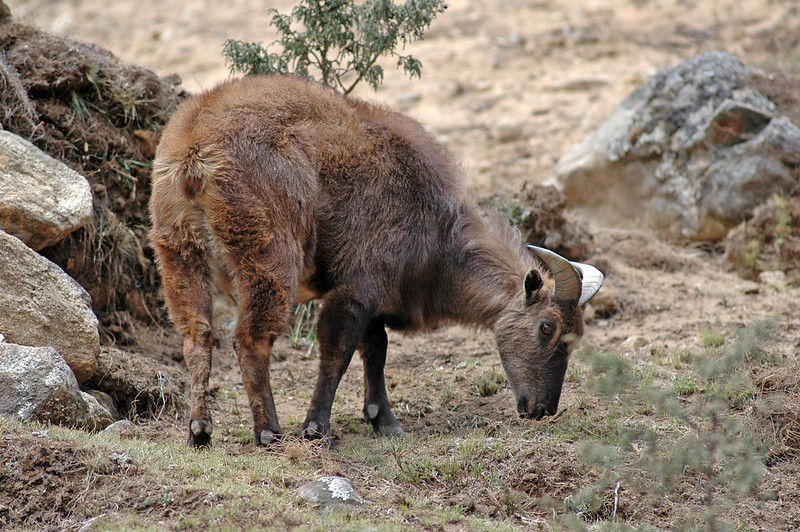
The Himalayan Tahr, native to the high slopes of the Himalayas, is known for its thick, reddish-brown fur. These sure-footed animals are well-adapted to life on steep, rocky terrains. Despite living in cold, unforgiving conditions, they thrive by grazing on grasses, shrubs, and moss. Male tahrs have majestic, backward-curving horns and a striking mane that becomes fuller during the winter months. Females and younger animals tend to stay in small herds, while older males are more solitary. Their ability to balance on sheer cliffs makes them incredible climbers.
Andean Mountain Deer (Hippocamelus antisensis)
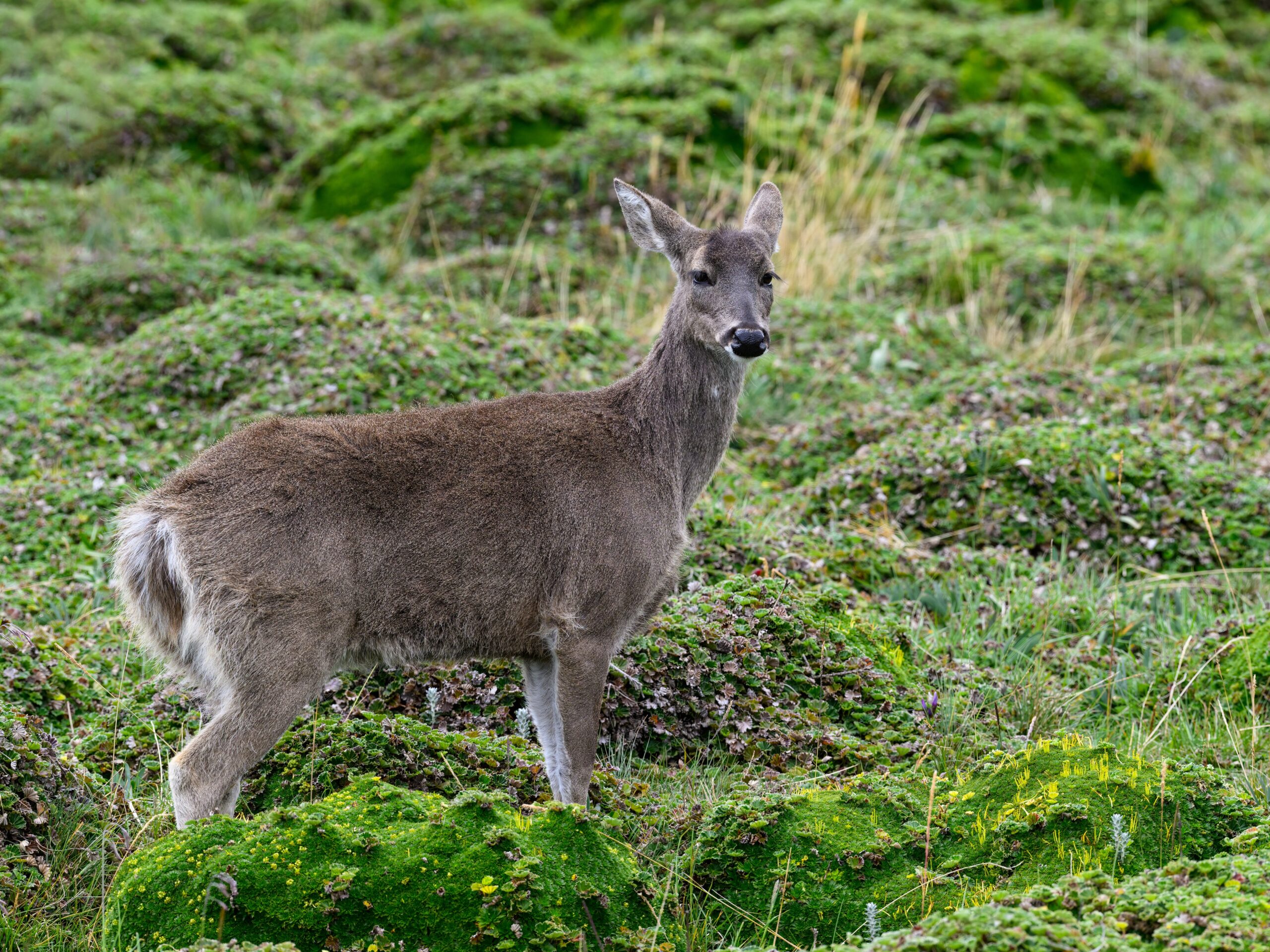
Inhabiting the Andean mountain range, this small species of deer, also known as the Taruca, has adapted to life at altitudes of 3,000 to 5,000 meters. Its thick, greyish-brown coat helps it blend into the rocky landscape. Tarucas are browsers, feeding on a wide variety of vegetation, including grasses and shrubs. Their numbers have been greatly affected by habitat destruction and hunting, making them vulnerable in the wild. Unlike other deer species, Tarucas often display a more solitary nature. Conservationists are working to restore the dwindling populations of these mountain dwellers.
Bharal (Pseudois nayaur)

Also known as the blue sheep, Bharals live in the rocky highlands of the Himalayas, often at elevations exceeding 4,000 meters. Their bluish-grey coat blends perfectly with the surrounding landscape, offering natural camouflage from predators like snow leopards. They feed on grasses and lichens, often found in remote areas with little vegetation. Bharals are social animals, living in large herds, particularly during the summer months. The males possess curved horns, which they use in dramatic head-butting contests during the breeding season. These resilient herbivores are crucial to the delicate balance of their alpine ecosystem.
Ethiopian Walia Ibex (Capra walie)
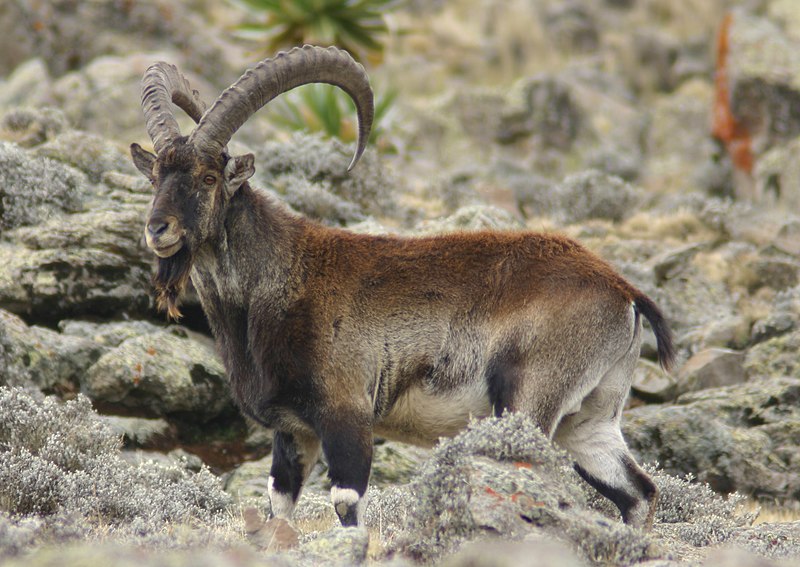
Endemic to the Simien Mountains of Ethiopia, the Walia Ibex is a majestic herbivore known for its long, curved horns. Males can weigh over 120 kilograms, while females are smaller and have shorter horns. Their preferred habitats are the steep, rocky cliffs, which offer protection from predators. Grazing primarily on grasses, herbs, and shrubs, they are well-adapted to survive at altitudes above 2,500 meters. Sadly, the Walia Ibex is endangered due to hunting and habitat encroachment. Conservation programs are in place to protect this species, as it plays a vital role in maintaining the local biodiversity.
Alpine Chamois (Rupicapra rupicapra)
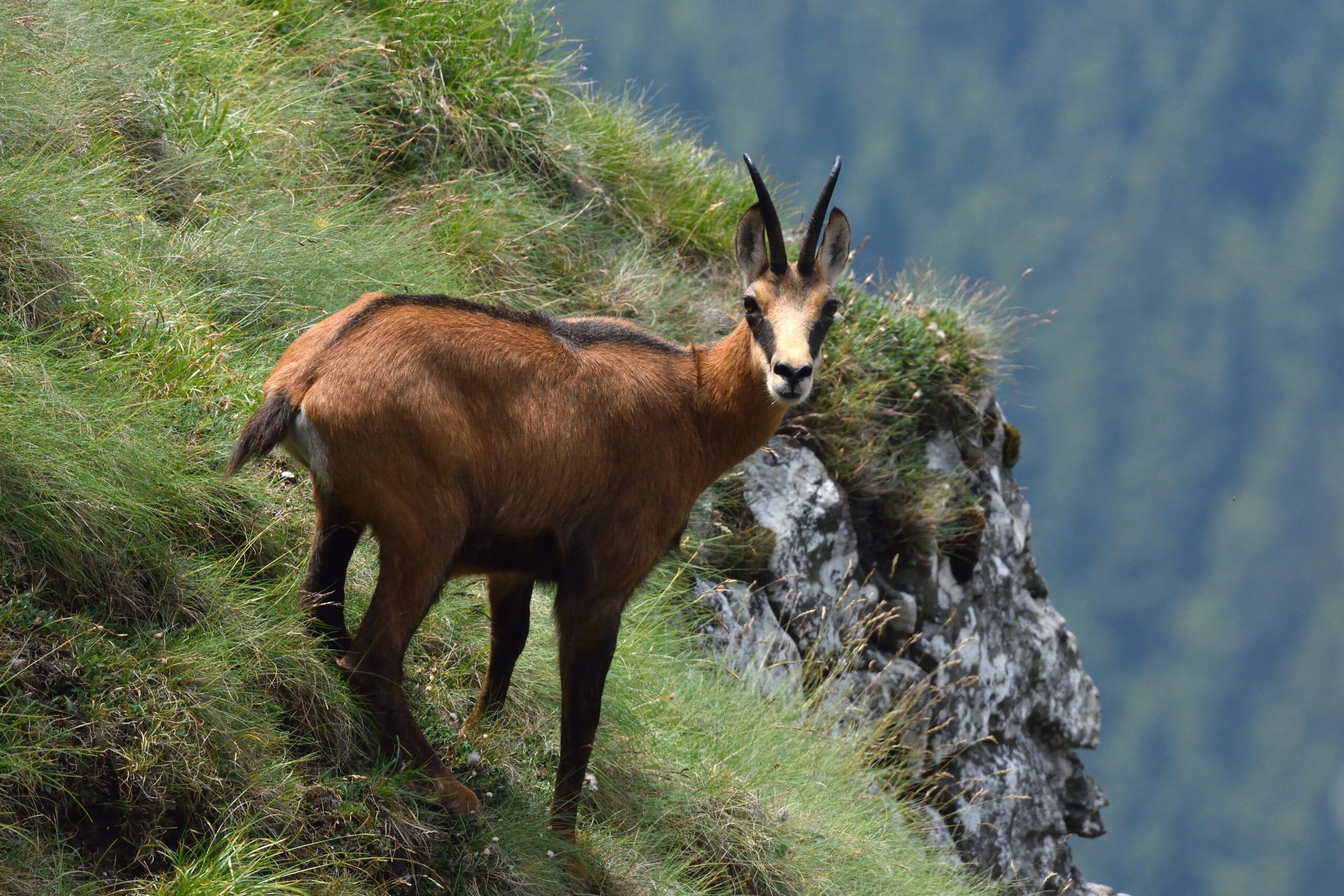
The Alpine Chamois is a goat-antelope species found in the mountainous regions of Europe, including the Alps and the Carpathians. Known for its agility, the Chamois can leap great distances, even on steep, rocky slopes. Their diet consists of grasses, herbs, and leaves during the warmer months, while they switch to lichens and bark in the winter. Both males and females have small, backward-curving horns, with males growing slightly larger. They are social animals, often seen in herds, but males tend to become more solitary during the mating season. The Chamois’ population remains stable, largely thanks to protected habitats.
Pyrenean Chamois (Rupicapra pyrenaica)
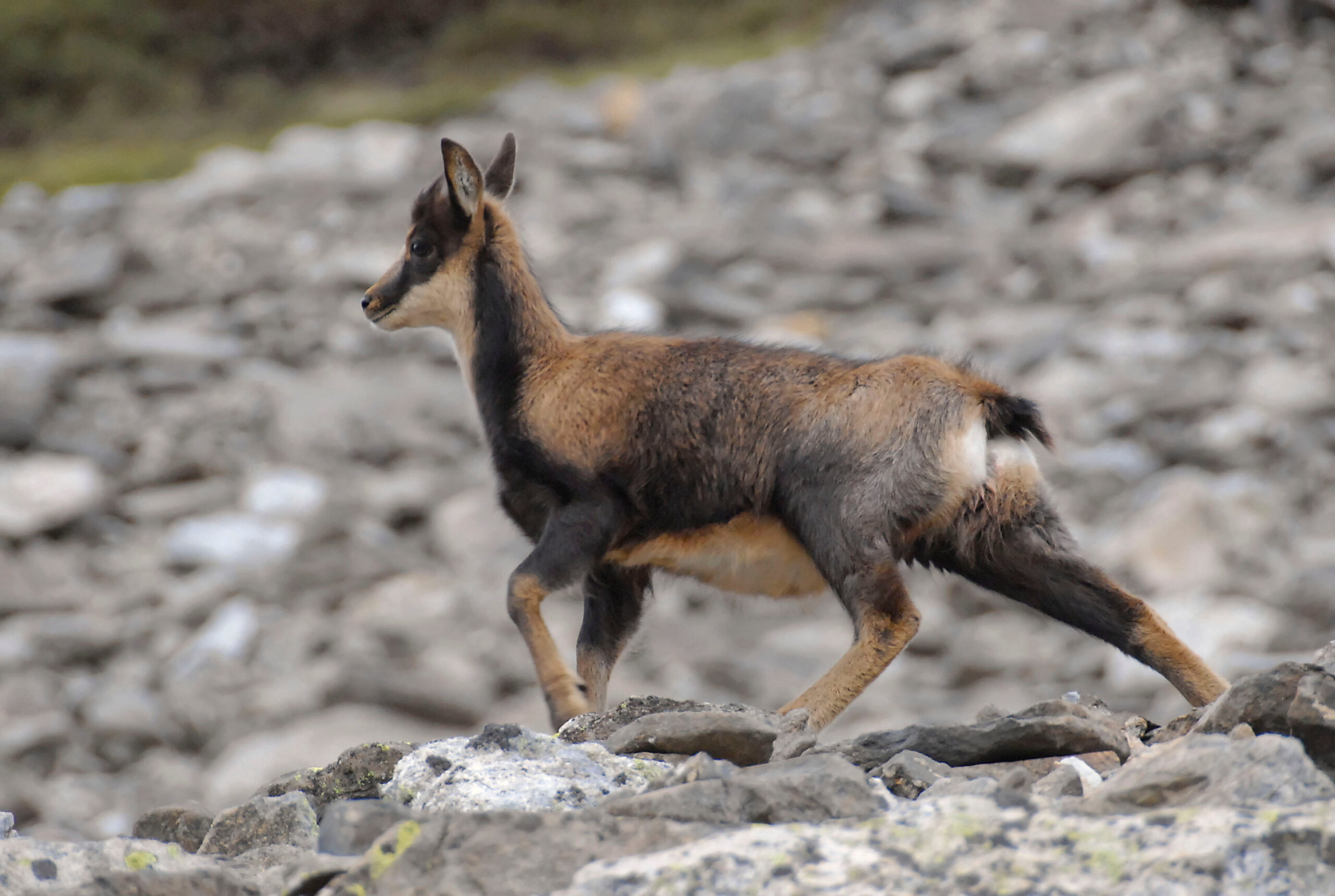
This agile herbivore is native to the Pyrenees mountain range between France and Spain. With their strong limbs and sure-footed nature, Pyrenean Chamois are adept at navigating steep, rocky landscapes. Their diet primarily consists of grasses and herbs, which they find even in the most precarious of places. Both sexes have slender, hooked horns that curve backwards. They are known for their speed and can sprint up to 50 kilometers per hour when threatened. Their populations are stable, thanks to conservation efforts in the region.
Mountain Tapir (Tapirus pinchaque)
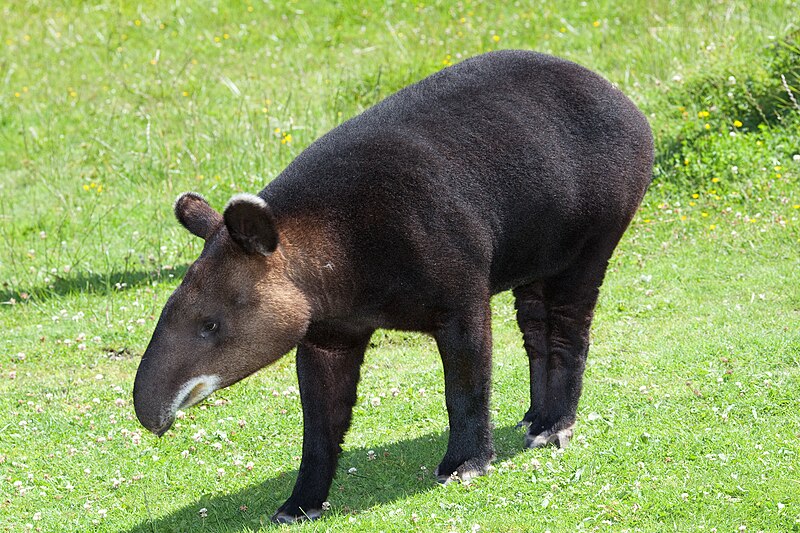
Residing in the cloud forests of the Andes, the Mountain Tapir is one of the most primitive herbivores in the region. This small tapir species feeds on soft vegetation, such as leaves, buds, and fruit. Its thick, woolly coat helps it endure the cool, misty environments of high-altitude forests. Despite their size, Mountain Tapirs are surprisingly shy and elusive, often moving quietly through the underbrush. Their populations have declined due to habitat loss and hunting, making them critically endangered. Protection efforts are underway to save this ancient herbivore from extinction.
Aoudad (Ammotragus lervia)
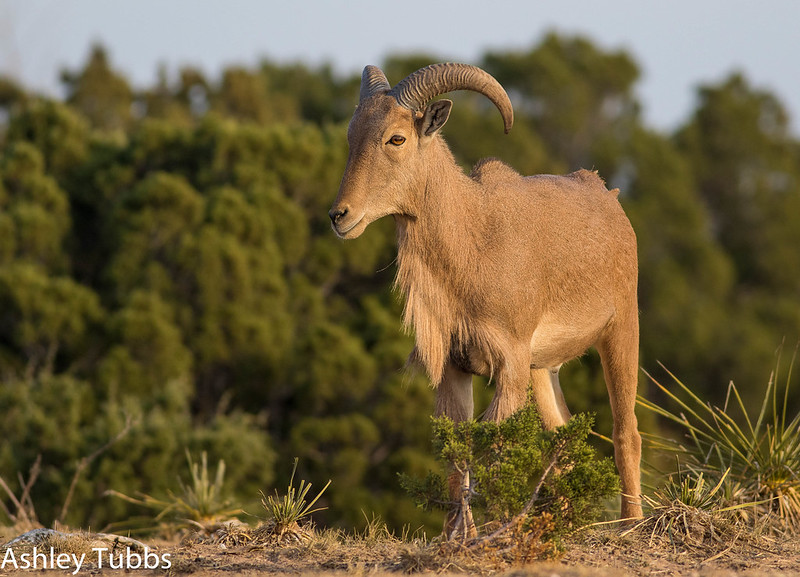
Also known as the Barbary sheep, Aoudads are native to the remote mountain ranges of North Africa. These herbivores are known for their thick, shaggy mane that extends down their chest and forelegs. Aoudads are highly adaptable, able to survive in dry, rocky terrains where vegetation is sparse. They primarily feed on grasses, shrubs, and lichens. Both males and females have large, curved horns that are used in dominance battles during mating season. Despite their impressive adaptations, Aoudads face threats from hunting and habitat loss across their range.
Huemul (Hippocamelus bisulcus)
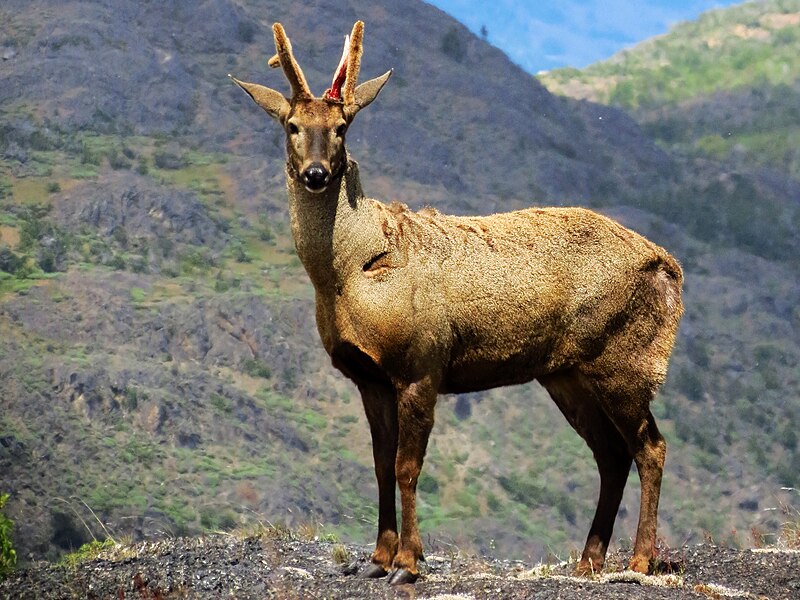
The Huemul, or South Andean Deer, inhabits the rugged mountain terrain of Patagonia. This small, stocky deer is well-suited for life in cool, alpine environments, feeding on grasses, shrubs, and lichens. Huemuls are known for their gentle demeanor and tend to live in small, family-oriented groups. Unfortunately, they are endangered, with fewer than 1,500 individuals left in the wild. Habitat fragmentation and poaching have pushed the species to the brink, making conservation efforts critical. The Huemul is an iconic symbol of Chile and Argentina, even appearing on their national coat of arms.
Nubian Ibex (Capra nubiana)
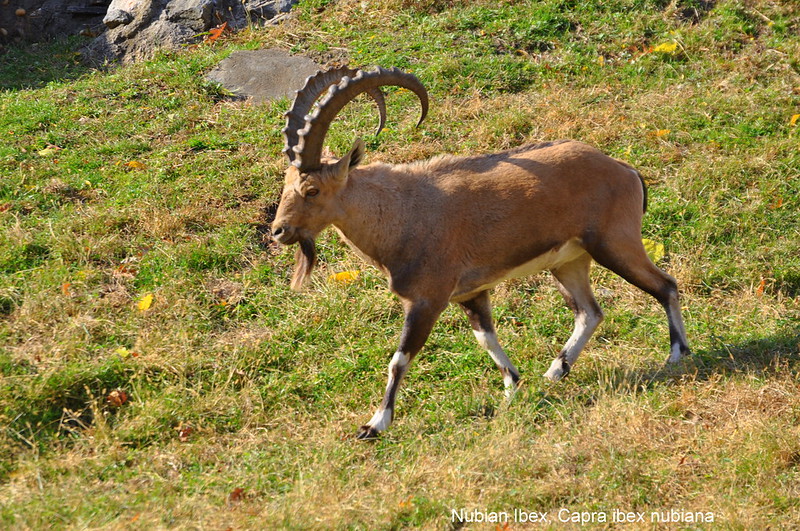
Living in the steep, arid mountains of the Middle East and Northeast Africa, the Nubian Ibex is a desert-dwelling herbivore. Their long, curved horns and muscular bodies make them adept climbers, able to scale nearly vertical cliffs. Nubian Ibexes feed on sparse desert vegetation, including grasses, herbs, and acacia leaves. They are social creatures, living in herds led by dominant males during the mating season. These ibexes have adapted to survive with minimal water, obtaining moisture from the plants they eat. Despite these adaptations, they are threatened by habitat loss and poaching.
Saiga Antelope (Saiga tatarica)

The Saiga Antelope, known for its unique, bulbous nose, inhabits the isolated steppe regions of Central Asia. Their specialized nose helps filter out dust from the air during migration and warms the cold air in winter. Saigas primarily feed on grasses and other low-lying vegetation, often grazing in herds. Unfortunately, their population has drastically declined due to hunting and habitat destruction. Efforts to protect them are ongoing, with conservationists striving to prevent the extinction of this bizarre-looking herbivore. Their ability to survive in harsh, open landscapes makes them a vital species in their ecosystem.
Rocky Mountain Goat (Oreamnos americanus)

Despite its name, the Rocky Mountain Goat is more closely related to antelope than to true goats. Found in the rugged mountains of North America, these sure-footed climbers inhabit some of the most inaccessible terrain. They graze on grasses, herbs, and mosses, often in areas where few other animals can reach. Both males and females have sharp, black horns that are used for defense and display during mating season. Rocky Mountain Goats are well-adapted to cold environments, with thick white coats that insulate them from freezing temperatures. Their populations remain stable due to their remote habitats, though they still face threats from climate change.
Sichuan Takin (Budorcas taxicolor tibetana)

The Sichuan Takin is a large, muscular herbivore native to the mountainous regions of Western China. With its thick, golden-brown fur and robust build, this animal is perfectly adapted to cold, rugged environments. Takins feed on a variety of vegetation, including bamboo, leaves, and grasses, and are known for their impressive digestive systems that allow them to extract nutrients from tough plants. These animals are social, often found in herds, particularly during the summer grazing season. Though they may appear slow, Takins can move quickly when threatened. Conservation efforts are critical, as they face pressure from habitat loss and poaching.
Pallas’s Cat (Otocolobus manul)
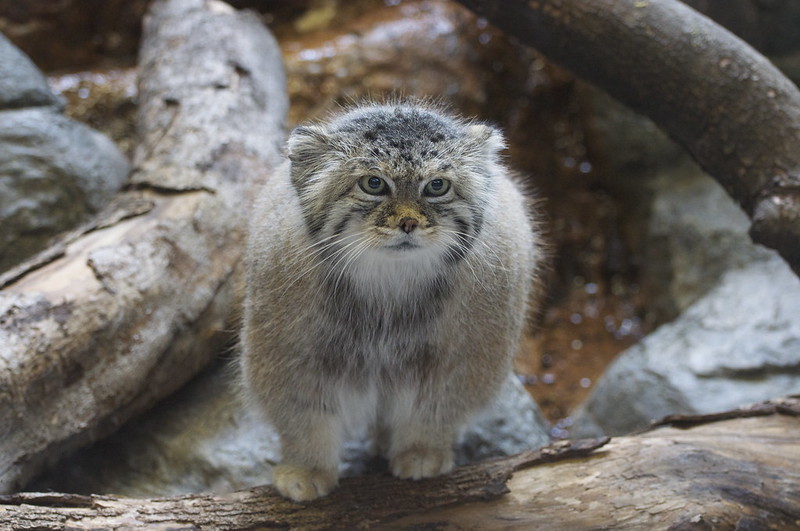
In the remote steppes and mountains of Central Asia, Pallas’s Cat, a small herbivorous wildcat, thrives. It feeds mainly on small mammals, but also consumes grasses and herbs. Adapted to cold, high-altitude environments, Pallas’s Cat has a thick, long coat to protect against harsh winds. They are solitary and elusive, often blending into rocky landscapes, making sightings rare. Unfortunately, habitat loss and hunting have threatened their populations. Conservation programs aim to protect this unique species, known for its distinctive round face and stocky build.
Kashmir Stag (Cervus hanglu)
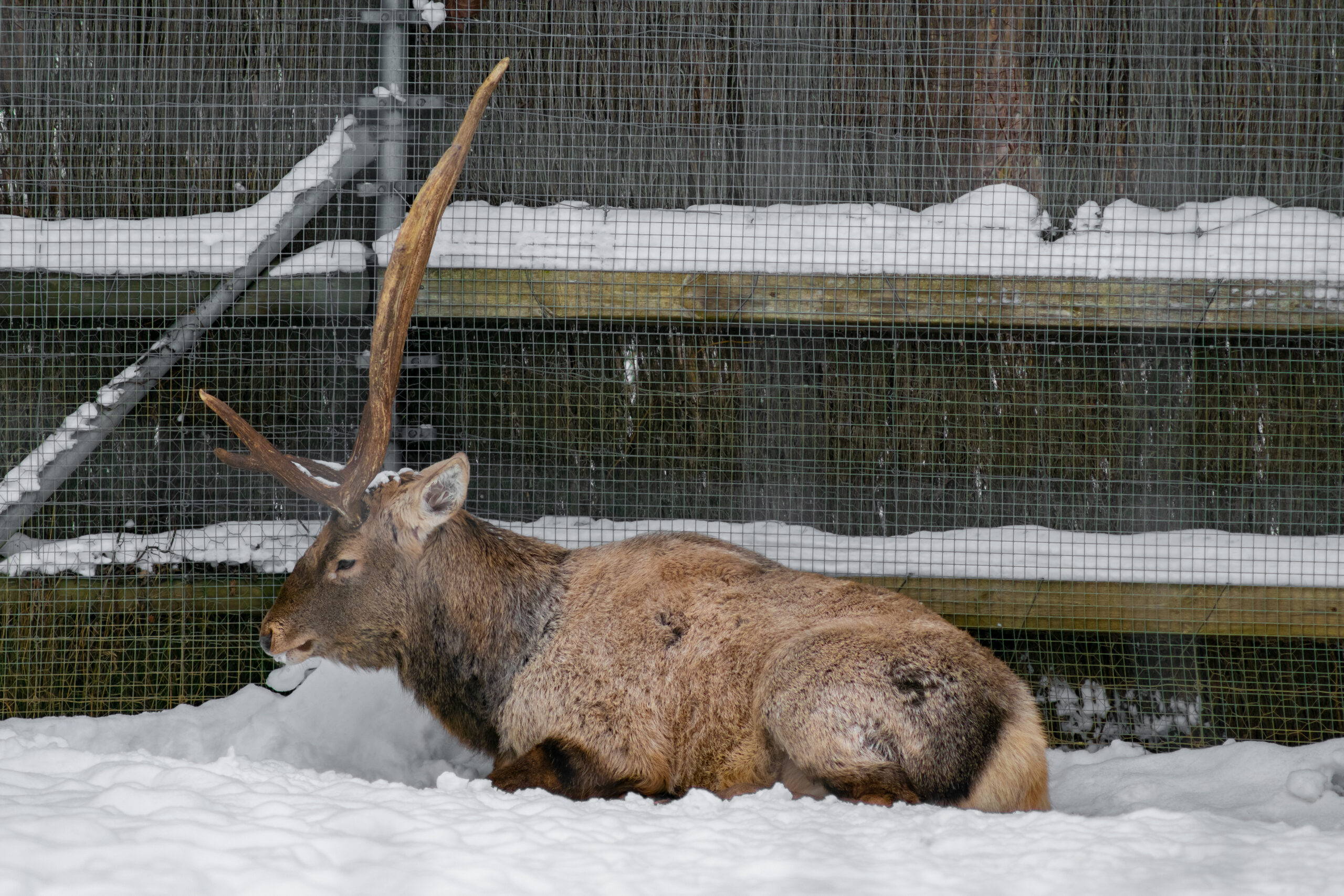
Also known as the Hangul, the Kashmir Stag is found in the dense alpine forests of northern India. These herbivores graze on grasses, shrubs, and tree bark, thriving in cold, isolated regions. Their reddish-brown coats and large antlers make them easily recognizable. However, the species is critically endangered, with only a few hundred individuals remaining in the wild. Conservation efforts are in place to restore their population, which has been drastically affected by habitat encroachment and poaching. The Kashmir Stag holds a special place in Indian wildlife, symbolizing the rich biodiversity of the region.
Mountain Nyala (Tragelaphus buxtoni)
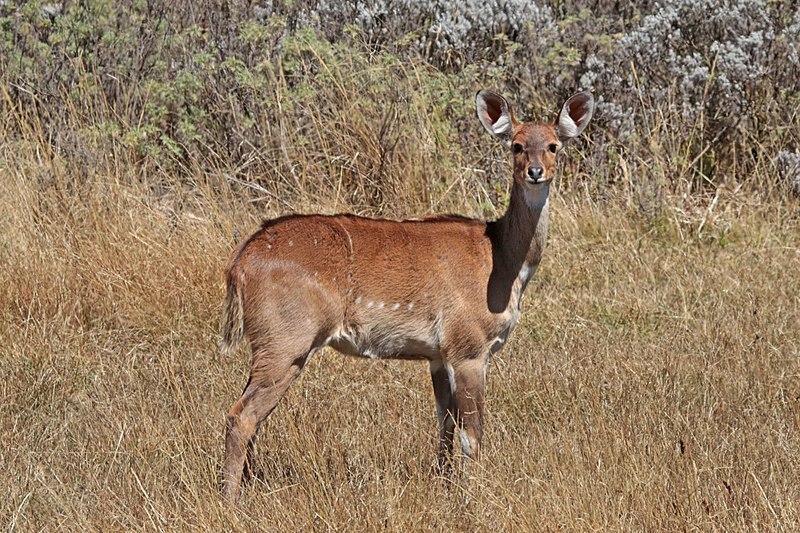
Endemic to Ethiopia’s Bale Mountains, the Mountain Nyala is a large antelope species that inhabits dense forests and high-altitude plateaus. Males are significantly larger than females and boast impressive, spiral horns. These herbivores feed on grasses, herbs, and shrubs, moving through dense vegetation in search of food. Due to their limited range and shrinking habitat, the Mountain Nyala is classified as endangered. They are a key species for maintaining the ecological balance of the Ethiopian highlands. Conservation efforts focus on protecting their remaining habitat from human encroachment and deforestation.
Red Serow (Capricornis rubidus)
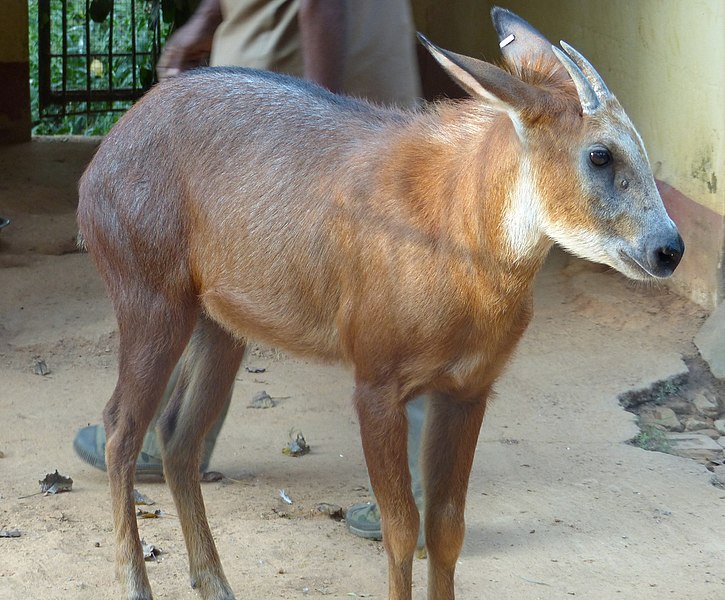
Native to the forested mountain ranges of Southeast Asia, the Red Serow is a rare and elusive species of goat-antelope. It has a thick, reddish-brown coat that provides excellent camouflage in its rocky environment. Red Serows are solitary animals, often seen foraging alone for grasses, leaves, and shrubs. Their sharp, backward-curving horns are used for defense against predators. Due to habitat loss and hunting, they are classified as vulnerable. Despite their elusive nature, Red Serows play a crucial role in maintaining the balance of their mountainous ecosystems.
This article originally appeared on Rarest.org.
More From Rarest.Org
Antique rugs have long been prized for their craftsmanship, historical significance, and unique designs. These handwoven masterpieces, originating from various regions around the world, not only add beauty to any space but also represent a rich cultural heritage. Read more.
The Olympics have produced countless moments that have left a lasting impact on both athletes and spectators. From record-breaking performances to displays of sheer determination, these events capture the true essence of human achievement. Read more.
Many species around the world are facing the threat of extinction, but not all of them are well-known. While efforts to save popular animals like pandas and tigers often make headlines, lesser-known species are quietly disappearing at an alarming rate. Read more.



